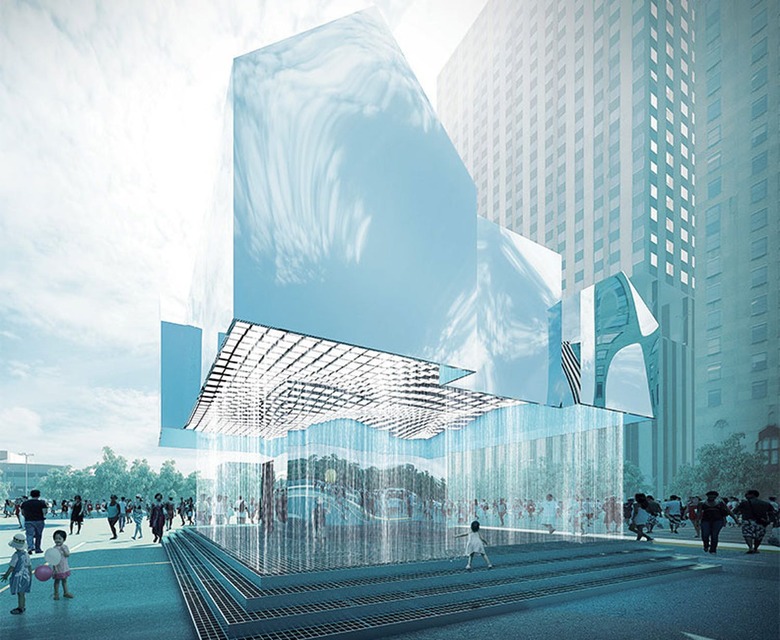Photography vs. Reality in Flint
John Hill
30. September 2013
Visualization: Two Islands
Photographs of the "Mark's House" in Flint, Michigan, have drawn criticism for their representation of the installation's reflective wrapper.
In early September we reported on renderings being used as weapons, but what about the role of architectural photography in shaping the public's opinion of a project? Such an issue came to the fore when photographs of the recently completed "Mark's House" installation in Flint, Michigan, designed by London's Two Islands after winning the inaugural Flat Lot competition earlier this year, were called out by commenters on one website (among many) as being unfaithful to reality.
Photo: Gavin Smith, courtesy of Two Islands
As can be seen at top-left, the winning rendering expresses the exterior of the raised volume as a smooth reflective surface. A professional photographer's depiction below that shows that in fact (as expected) the exterior is made up of smaller panels; yet it is still fairly smooth, allowing for a similar reflectivity. The bottom photo shows a less adulterated reality, where the ripples in the mylar panels are an obvious distraction to the design's intent in reflecting its surroundings.
Photo: MLive.com
The $25,000 project (whose budget rose to $40,000, aided by online donations) was completed a couple months behind schedule, and most likely the speed and difficulty of the construction, combined with the small budget, resulted in the ungainly exterior. As one local dissenter of the project put it: "After promising a fantastical house of mirrors that would reflect the city around it, those behind the project instead delivered a wrinkled mass of mylar that has already started peeling away to expose the wood beneath it. ... In a city already plagued by 5,000 blighted properties, the floating house has missed the mark in promoting a conversation about Flint’s future and instead become just another eyesore." Yet to many people who have see the installation only via its official (middle) photos, the project is neither a wrinkled mass nor an eyesore.


